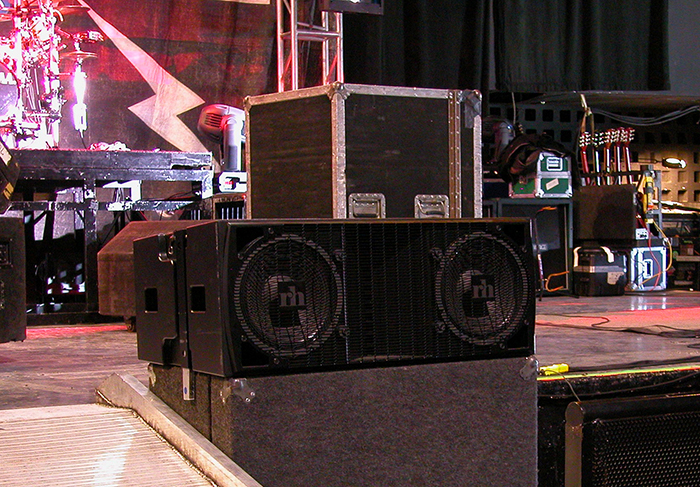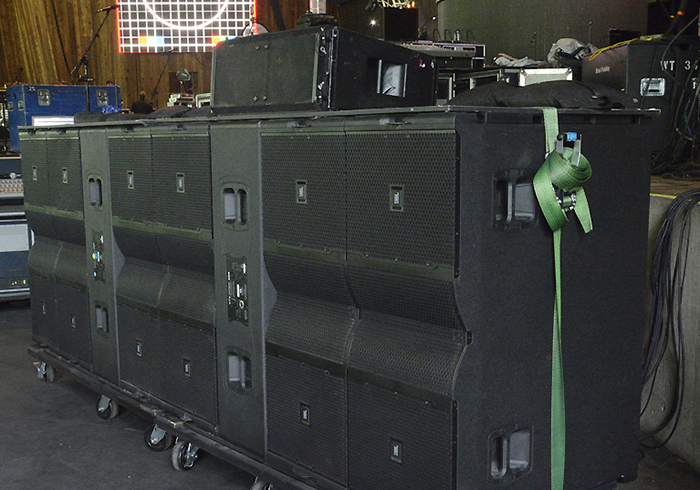Optimization Approach #3
The equal level, equal time technique excels at minimizing combing in the seams between fills and mains. In my experience, this works well at shows where the majority of sound originates from the PA system.
For concert events in smaller venues with significant stage volume, the Level Time Combine system may not provide the clarity necessary for patrons in the front rows. This is because stage wash, a combination of unbalanced backline instruments and LF energy bending around monitor wedges, can make for an uneven and muddy mix for those close to the band.
To counter this issue, front fills might be turned up during sound check or showtime, and even a special matrix might need to be created to feed the fills with greater vocal or other important but quiet instruments.
This creates what I call the Stage Wash Alignment. The fills might be optimized before sound check for smooth seams, but once the band hits the stage, tweaks may be made to ensure the front rows can clearly hear the vocals.
As with the Image Localization approach, tweaking overall fill level by ear moves the acoustic crossover to a location without time alignment, potentially intensifying comb filtering. If the overall front fill level is left untouched, but greater vocal is added, the acoustic crossover is moved for the vocal only, which can make for a difficult-to-predict comb filter. Of course, these issues might be worth overlooking for the sake of vocal clarity in the all-important front rows.
Similar to the image localization method, the Stage Wash Technique can be accomplished with subjective listening, objective FFT software measurement, or a combination of the two. While measurement software is the most reliable and precise, trained ears can achieve excellent results. The following steps can be accomplished with tools of your preference:
1. Match the fills and mains in frequency response.
2. High pass front fills to reduce low frequency combing with mains, subs, and stage wash.
3. Adjust fills for equal level with mains.
4. Delay fills to match mains system arrival time.
5. At sound check, if necessary, adjust fill level by ear or use a matrix to add additional vocal or other weak mix elements.
In Summary
In my role as an educator, I searched for a simple solution to front fill alignment that my students could understand, remember, and practice. What I discovered is that there is no one-size-fits all approach. Depending on venue size, event type, and personal preference, different techniques may be appropriate.
The workflows presented here represent my current understanding of the subject, and other engineers will most likely have differing opinions and practices. This is what makes our field so interesting. There’s more than one way to make great sound, and there’s always more to learn.






